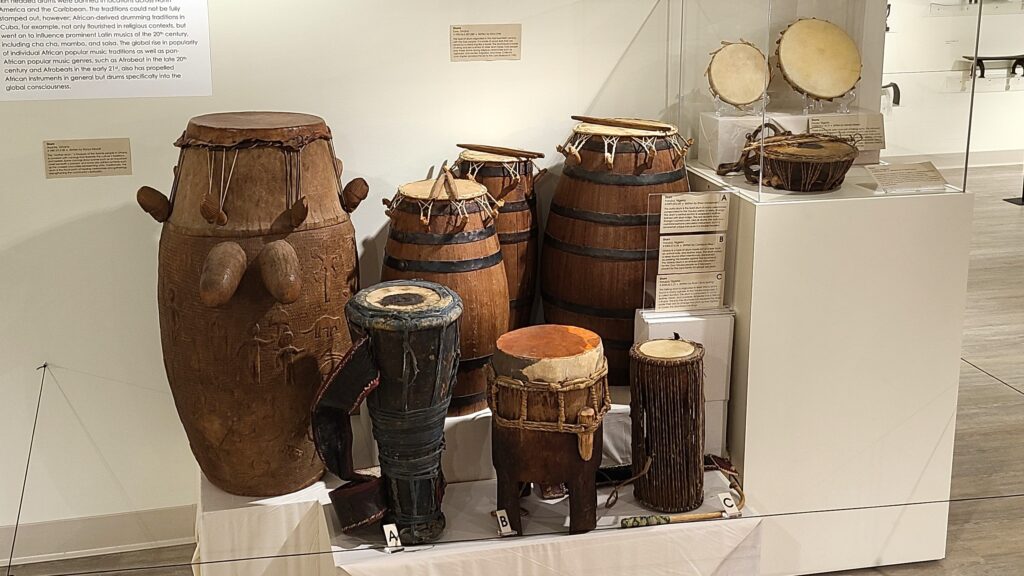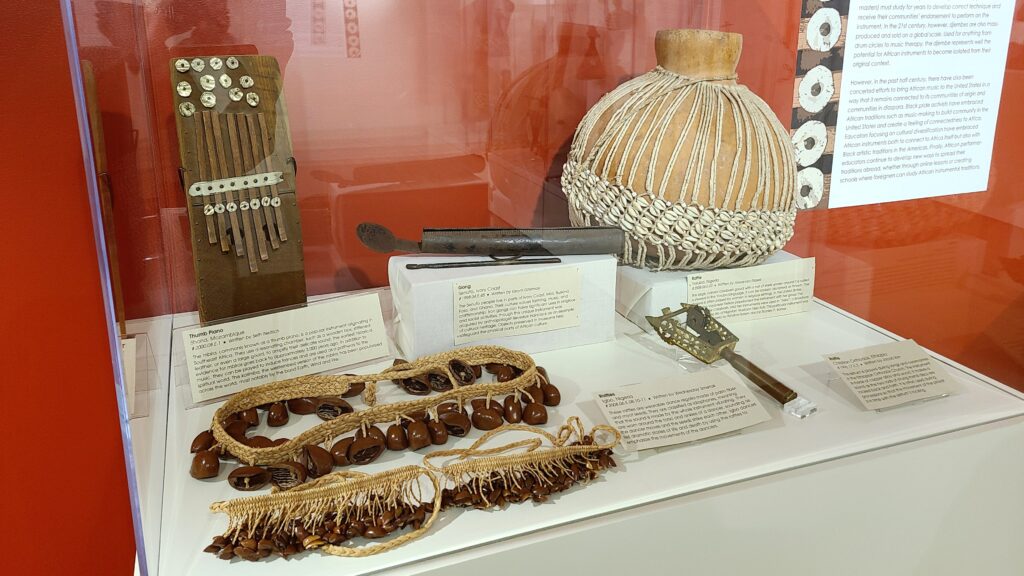Beyond Drumming: African Musical Instruments

A Cornucopia of Sounds
Africa is home to instruments of every family. Stringed instruments such as the plucked West African kora, the bowed Ugandan endingidi, and the South African musical bow, provide an array of melodic options, as do a variety of wooden xylophones. Mbira, instruments sounded by plucking small metal lamellae, are emblematic of the southern range of the continent. Shakers and rattles, both worn for dancing and played separately, are found across the continent; some are made with natural materials, such as seeds and gourds, while others are made of metal. Flutes and horns, the latter associated with hunting traditions, round out the category of blown instruments. Each of these instruments has its own historical associations and roles. Finally, instruments imported and adapted from other places in recent centuries have played central roles in African music-making. European brass instruments that once occupied colonizing forces were repurposed into local wind band and jazz traditions, while electric guitars have formed the backbone of African popular sounds for over half a century.
Though some of these instruments have become popular outside of Africa—shekere, for example, are used in the North Carolina elementary music education curriculum—many others are largely unnoticed outside of their communities in diaspora. This exhibit highlights many of these other instrument types.
This exhibit was curated by the students in Dr. Elizabeth Clendinning’s course “Introduction to the Music of World Cultures.” It was on display from January 23, 2024 to January 25, 2025.
Explore the Objects in this Section
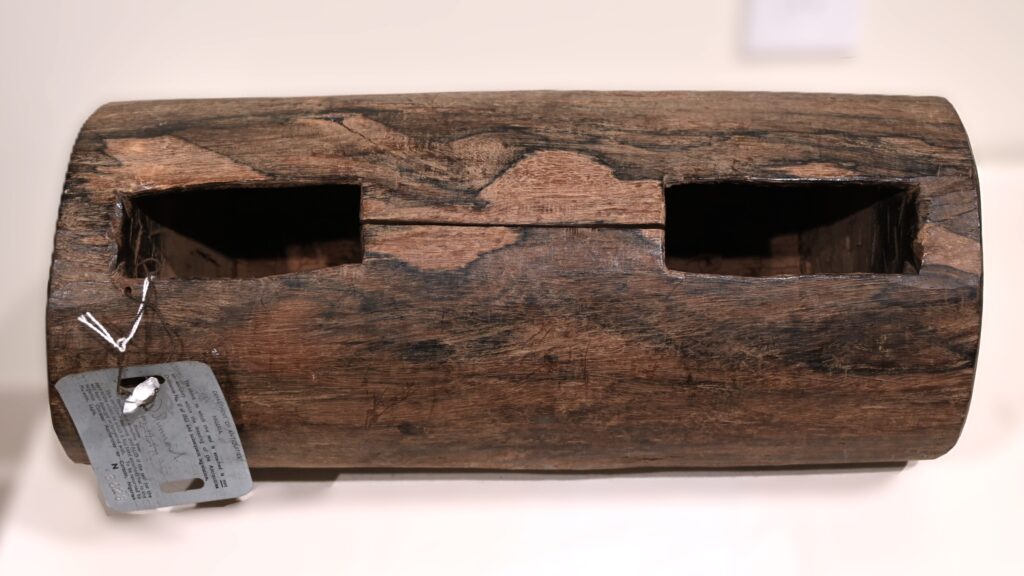
Slit Drum
Igbo, Nigeria
#2006.06.E.07 ● Written by Carolina Gonzalez Gutierrez
The ekwe, or slit drum, is a percussion instrument used in Igbo musical traditions. It is made from a hollowed-out tree trunk and is played with wooden beaters struck around the rectangular openings. By changing the position of the strike relative to the opening, the player changes the pitch. This ekwe was brought to Winston-Salem by Dr. Stanley P. Bohrer, who collected hundreds of traditional cultural objects while teaching at the University of Ibadan. Many of the objects he collected are now part of the Nigerian National Museum.
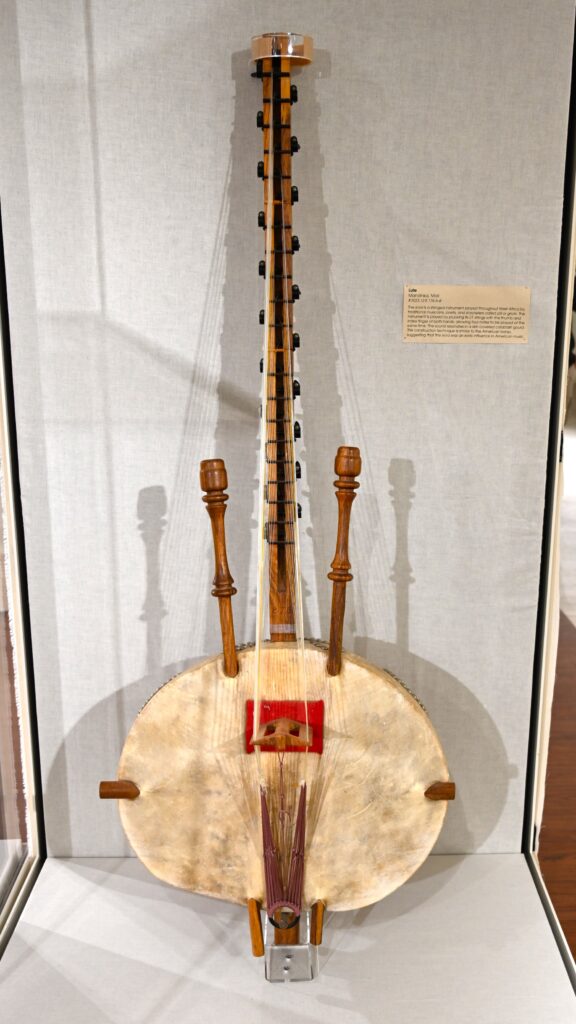
Lute
Mandinka, Mali
#2023.12.E.176.A-B
The kora is a stringed instrument played throughout West Africa by traditional musicians, poets, and storytellers called jali or griots. The instrument is played by plucking its 21 strings with the thumb and index finger of both hands, allowing four notes to be played at the same time. The sound resonates in a skin-covered calabash gourd. This construction technique is similar to the American banjo, suggesting that the kora was an early influence in American music.
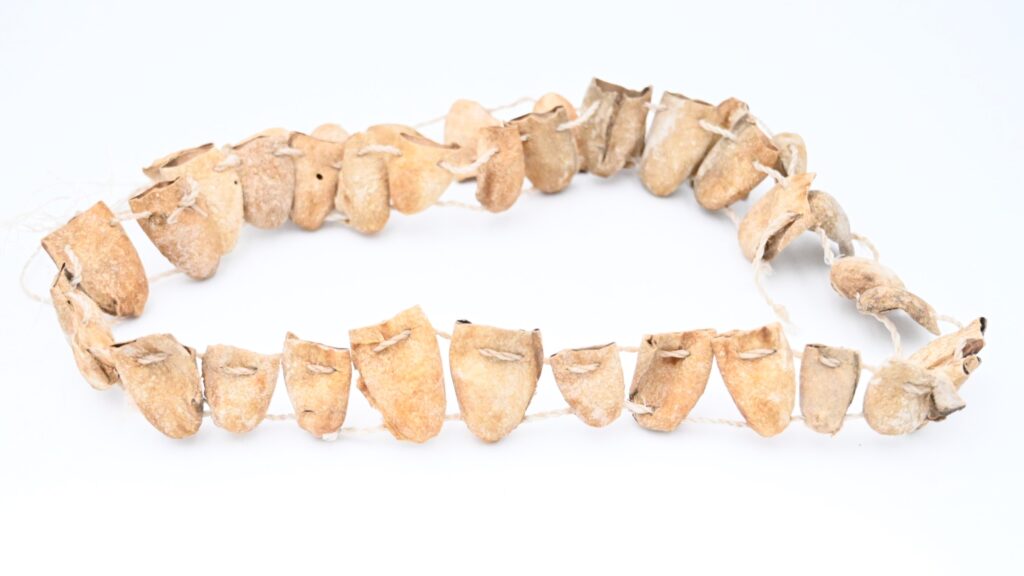
Rattle
San, Botswana
#1990.01.E.04 ● Written by Haley Xu
Any rattling object can be turned into an idiophone-type instrument. This dance rattle, for example, is made from 39 segments of moth cocoons! The cocoons have been filled with seeds and sewn together by two fiber ropes to create a belt. Dancers tie the rattles around their legs and dance to produce a rhythm. San dancing can often have healing purposes in community gatherings and rituals. Community healing is one example of the egalitarian values found in the San culture.
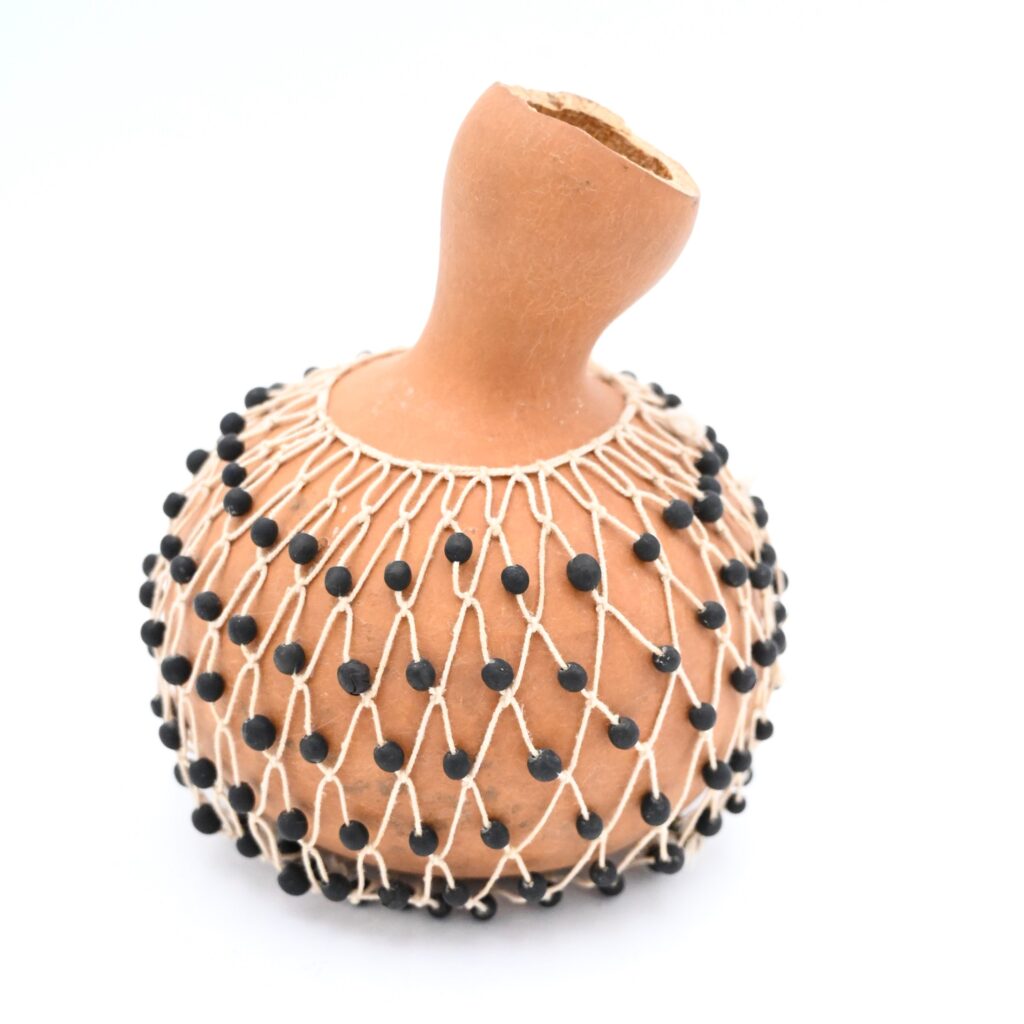
Rattle
Yoruba, Nigeria
#2010.04.E.17 ● Written by Jaden Barbier
This percussion instrument is made of a hollow gourd and a net of seeds. Though it originates in West Africa, it is also found in North and South America. Shekeres play several roles in traditional African music, such as keeping time, and are used in religious ceremonies on both sides of the Atlantic. They are often used in elementary and middle school music education in the United States, including here in Winston-Salem, because of their cultural relevance and simple playing technique.
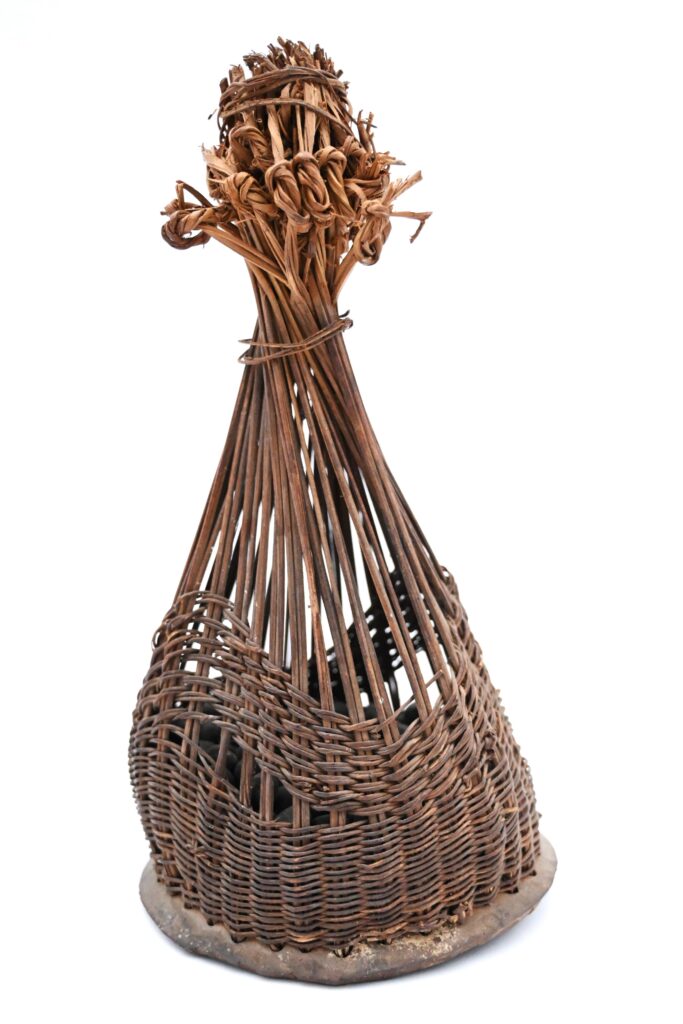
Rattle
Bamileke, Cameroon
#2001.10.E.72 ● Written by Mackenzie Hart
This instrument is essentially a basket filled with nut shells. The maker twisted the vertical stakes to enclose rattling shells and provide a handle. This particular object is used in dances and is a well-known cultural symbol of the Bamileke, one of the largest ethnic groups in Cameroon. Rattles are used to accompany singing or accentuate dancing when celebrating life events.
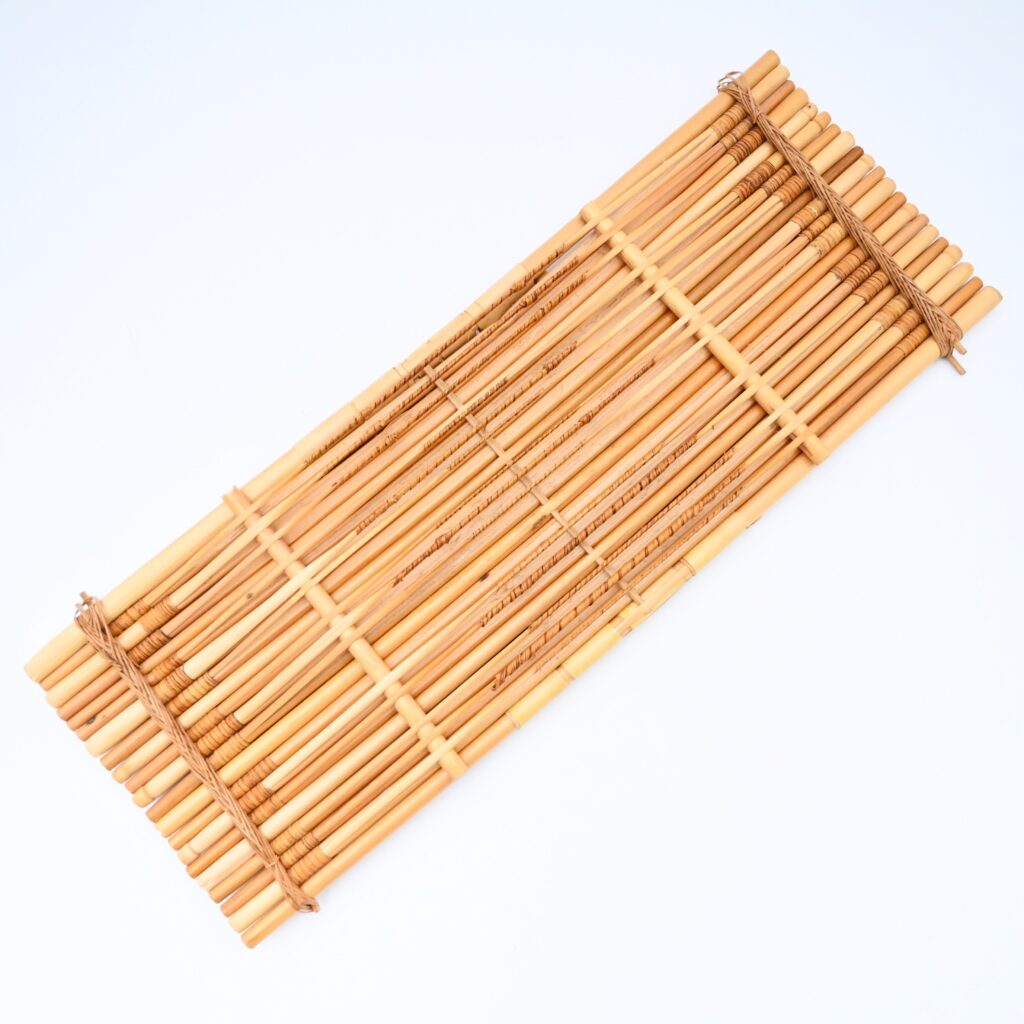
Zither
Igbo, Nigeria
#2008.06.E.14 ● Written by Gus Trombold
This yomkwo is constructed from dried grass, reeds, and seeds. It is classified as a chordophone, meaning the sound is produced by plucking the stretched grass strings. However, it also contains a hollow pocket with dried seeds to serve as a percussion shaker. The Igbo culture’s unique approach to non-hierarchical social organization and lack of a strict class for musicians enables the yomkwo to be an instrument for everyone. But as the place of traditional music has receded in Nigerian culture, so too has this zither’s prevalence.
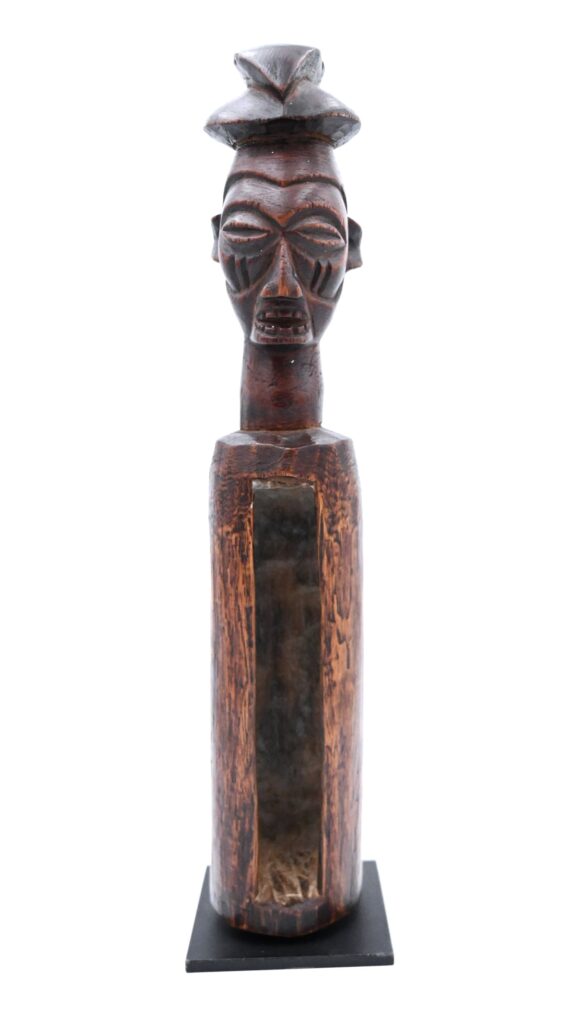
Slit Drum
Yaka, Democratic Republic of the Congo
#1987.01.E.05 ● Written by Yujing Qu
Yaka slit drums are made with a hardwood base which allows for sculptural finishes, such as this vivid human head. It likely symbolizes a bridge connecting one’s body with their spirit. Primarily, these drums are used in Yaka divination ceremonies, as containers for medicines in healing rites, and as accompaniment for ritual dances. The drum is played to produce two different pitches.
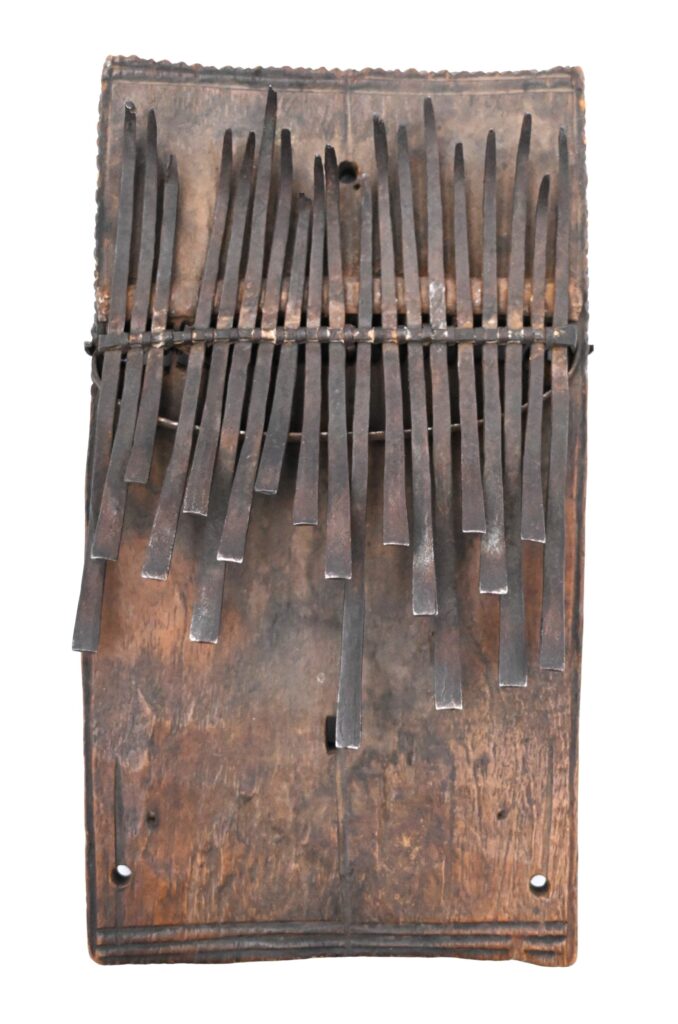
Thumb Piano
Kuba, Democratic Republic of the Congo
#1986.04.E.027 ● Written by Brighid Biehl
In 1939, Ida Black went to the Kuba kingdom on a mission trip where she witnessed the crowning of the new king and collected this thumb piano. Thumb pianos in the Kuba culture are played for both the living and the ancestors. While some sanza are ornately decorated, this example is relatively simple. Traditional religious music has declined with the influence of missionaries, so older instruments like this one are now used as teaching tools for Kuba history and culture.
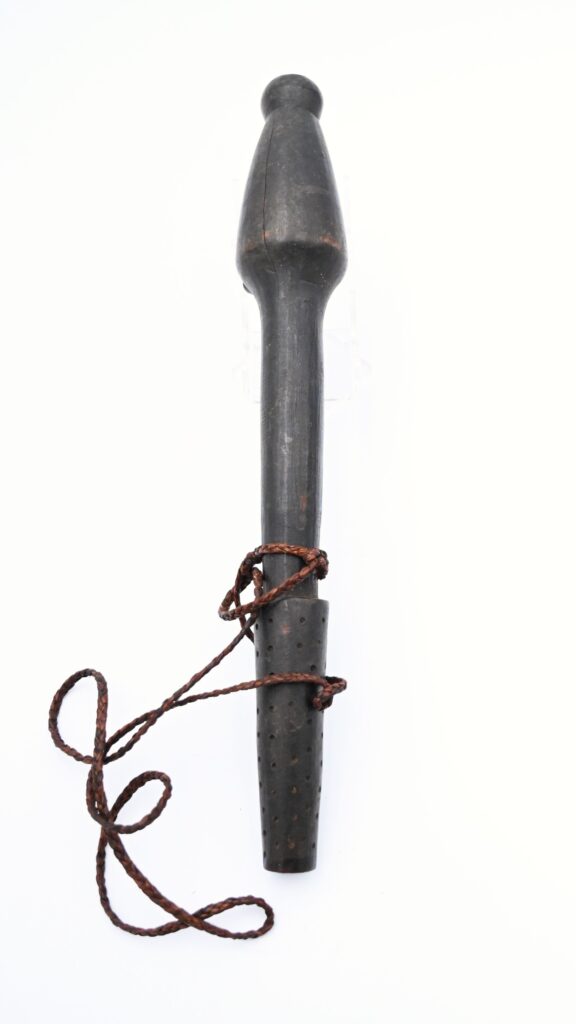
Flute
Kuba, Democratic Republic of the Congo
#1997.06.E.058
A tapering tube topped by a bulbous mouthpiece and a single finger hole is a typical shape for a flute in Central Africa. Similar to a whistle, flutes are aerophones, meaning that the sound is produced by vibrating air forced through the instrument. The musician covers and uncovers the hole to alter the pitch as they play, allowing them to mimic speech patterns and “sing” as an accompaniment to drums.
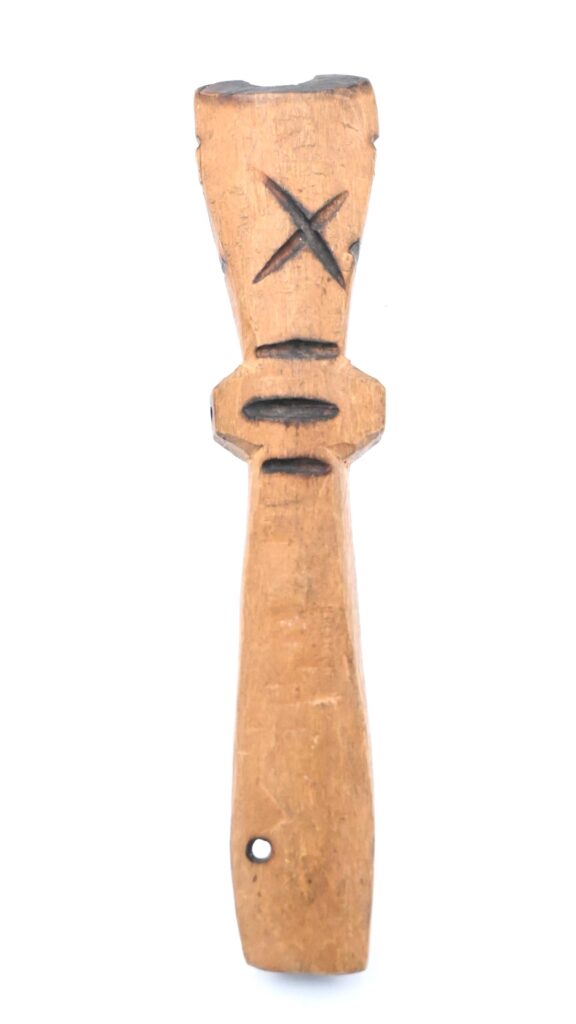
Flute
Yoruba, Nigeria
#2008.06.E.16
The oja is an end-blown flute with two holes set perpendicular to the barrel. It produces a high-pitched sound that varies based on the size of the instrument—this example is relatively small and produces a higher note. Though it was made by a Yoruba instrument-maker, similar flutes are made in other cultures throughout Nigeria. Traditionally, oja music was performed for fun, but today it mostly exists as ceremonial music when it accompanies drumming, dancing, or chanting.
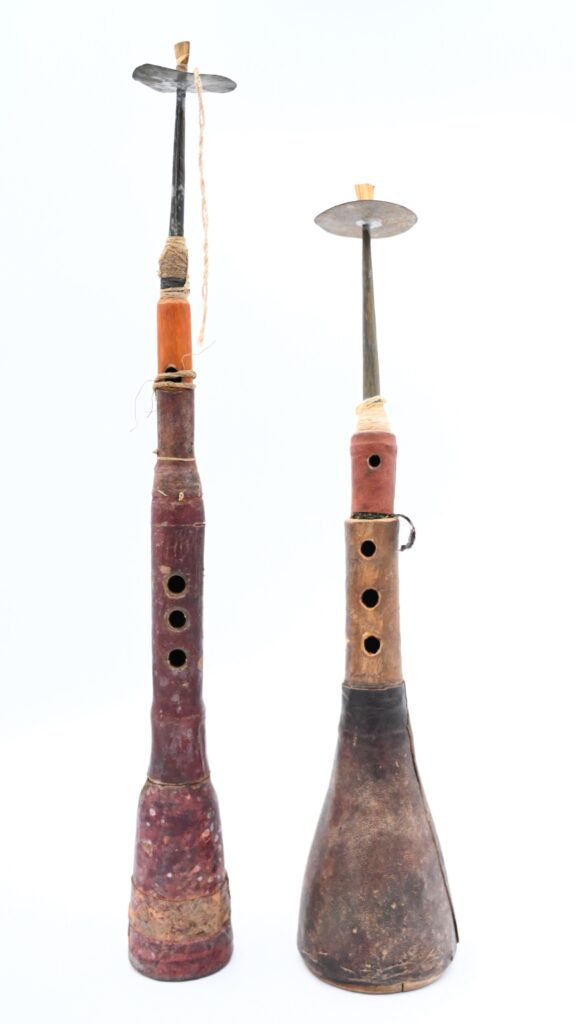
Oboes
Hausa, Nigeria
#2015.01.E.17 ● Written by Mia Schoenbeck
The algaita is an ancient instrument of the Hausa and Kanuri people in Nigeria. It is classified as a double reed wind instrument, meaning that the sound is produced by blowing through two vibrating pieces of cut reed. Musicians can use circular breathing techniques to play a continuous droning sound. It is traditionally used in ceremonies for local dignitaries and rulers, but it is also used to add a haunting and hypnotic edge to music today, including jazz music.


